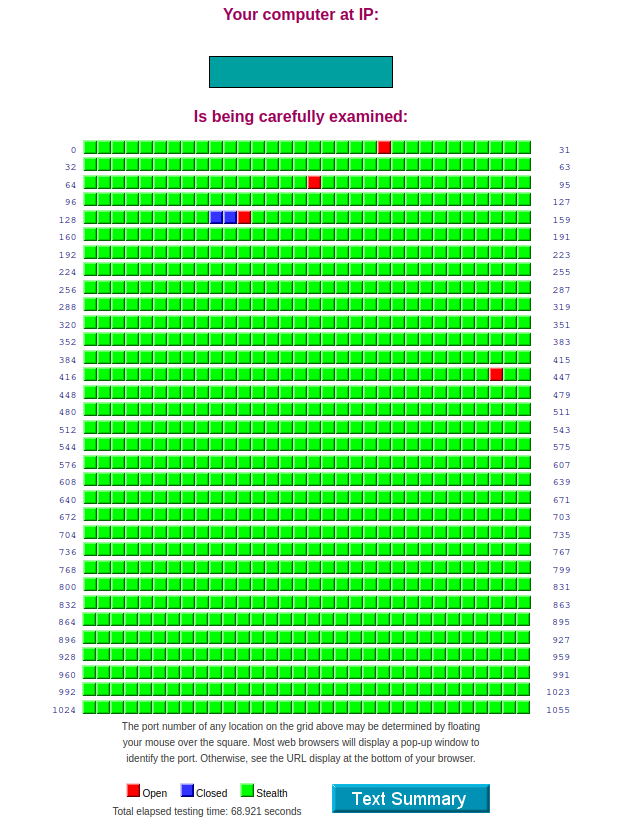Here then: Port Forwarding TCP port 443 on DrayTek SSL VPN Routers ?
Rather than following the suggestion in that guide, I would recommend a) first preference option, disable SSL VPN if you don’t need it, or b) second option, move the SSL VPN to a higher-numbered (>1024) random port if you do need it.
“grc” https://www.grc.com
Outside.
Here’s what a scan looks like.
and illustrates why right after Purism finishes shipping the Librem 5, they should start developing a router. ![]()
